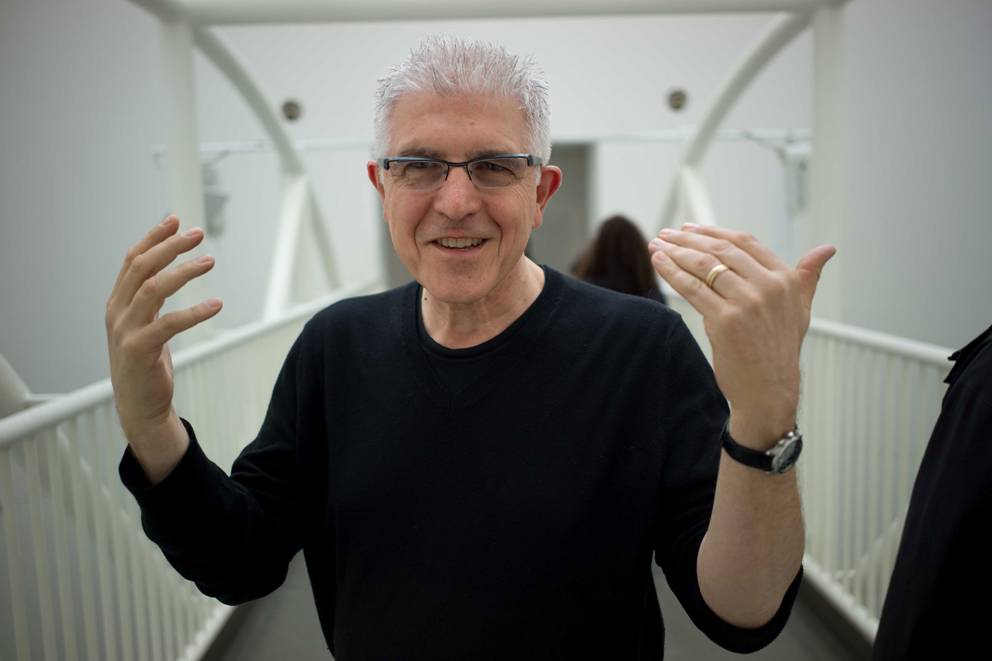The Collide@CERN Residency Award is moving on to the second go-round. Once again, dozens of artists from throughout the world applied for the chance to spend time at CERN in Geneva and the Ars Electronica Futurelab in Linz, to implement their projects in a potentially completely new environment, to work together with the world’s best & brightest in science and the arts, and to draw inspiration from this experience for their own works.
The next to take advantage of this opportunity is Bill Fontana (US), winner of the Collide@CERN Residency Award 2013. His métier is acoustics; he calls the works he’s been creating since 1976 “sound sculptures,” objects that play with the perception of sound, time and space. Fontana places microphones, sensors and similar devices at various acoustic sources and collects the auditory impressions at a central location at which one can experience an acoustic world that doesn’t actually exist in reality. Fontana plays with the perception of space and time, arranging acoustic events in new contexts.

Bill Fontana with his Golden Nica, which he received for “Speeds of Time versions 1 and 2” in the “Digital Musics” in 2009
Since the 1990s, Fontana has increasingly been concentrating on the investigation of seismic networks, including attempts to acoustically capture the motion of oceanic waves. An overview of his oeuvre is online at resoundings.org.
That an established artist of the caliber of Bill Fontana applied for the Collide@CERN Residency Award attests to its worldwide reputation. Jury member Ariane Koek, responsible for art and culture at CERN, was pleased by the increase in the number of countries from which applications were submitted. Fellow juror Michael Doser expressed delight at Fontana’s readiness to undertake an open encounter with CERN and a completely new environment, to absorb the moods and perspectives, and to emerge from this setting with innovative new ideas.
For Doser, Collide@CERN constitutes an exciting experiment in how an artist’s point of view can be reconciled with that of science, and he hopes that the experiment can run long enough to yield insights. On the other hand, he’s used to working on an experiment for years or even decades. The wheels of modern science turn meticulously but very slowly until they bring forth scientifically valid findings.
He describes the relationship between the artists who spend some time at CERN in Geneva and the scientists on the staff there in a way that almost makes it feel like there’s a new club in town that’s suddenly the hotspot for the in-crowd. Curiosity is high, since people don’t have a well-defined idea of what to expect from a confrontation with art.
Ariane Koek went on to describe how scientists brought a good measure of cautious respect to their initial encounter with Julius von Bismarck, the first winner of the Collide@CERN Residency Award. Indeed, the artist himself also needed some time to adjust to the new facts & circumstances, come to terms with his new surroundings, and to get accustomed to the interaction with the others. For Doser, how these two worlds reciprocally influence one another is the whole point of Collide@CERN, and this is sure to remain an exciting issue in the case of Bill Fontana too.
Bill Fontana will visit CERN in December to have perform some testrecordings of the LHC which is going to be shut down in February for maintenance.
